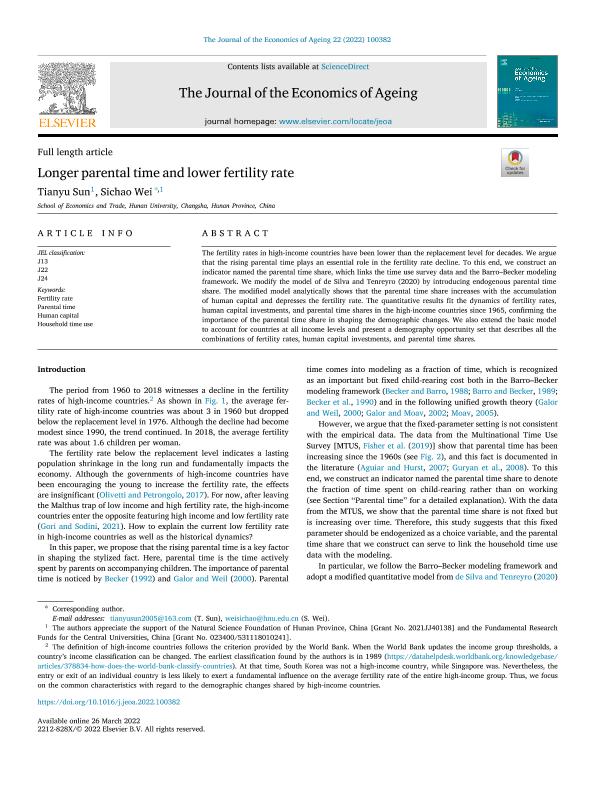Longer parental time and lower fertility rate

Contenido multimedia no disponible por derechos de autor o por acceso restringido. Contacte con la institución para más información.
| Tag | 1 | 2 | Valor |
|---|---|---|---|
| LDR | 00000cab a2200000 4500 | ||
| 001 | MAP20220017503 | ||
| 003 | MAP | ||
| 005 | 20220613121827.0 | ||
| 008 | 220613e20220606esp|||p |0|||b|spa d | ||
| 040 | $aMAP$bspa$dMAP | ||
| 084 | $a931.2 | ||
| 100 | 1 | $0MAPA20220006057$aSun, Tianyu | |
| 245 | 1 | 0 | $aLonger parental time and lower fertility rate$cSun Tianyu, Sichao Wei |
| 520 | $aThe fertility rates in high-income countries have been lower than the replacement level for decades. We argue that the rising parental time plays an essential role in the fertility rate decline. To this end, we construct an indicator named the parental time share, which links the time use survey data and the BarroBecker modeling framework. We modify the model of de Silva and Tenreyro (2020) by introducing endogenous parental time share. The modified model analytically shows that the parental time share increases with the accumulation of human capital and depresses the fertility rate. The quantitative results fit the dynamics of fertility rates, human capital investments, and parental time shares in the high-income countries since 1965, confirming the importance of the parental time share in shaping the demographic changes. We also extend the basic model to account for countries at all income levels and present a demography opportunity set that describes all the combinations of fertility rates, human capital investments, and parental time shares. | ||
| 650 | 4 | $0MAPA20080610050$aCrecimiento demográfico | |
| 650 | 4 | $0MAPA20080568771$aEnvejecimiento | |
| 700 | 1 | $0MAPA20220006064$a Wei, Sichao | |
| 773 | 0 | $wMAP20210010194$g06/06/2022 Volumen 22 - 2022 , 13 p.$tThe Journal of the economics of ageing $dOxford : Elsevier ScienceDirect, 2021- |

